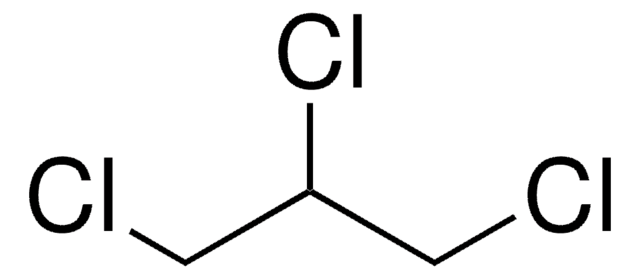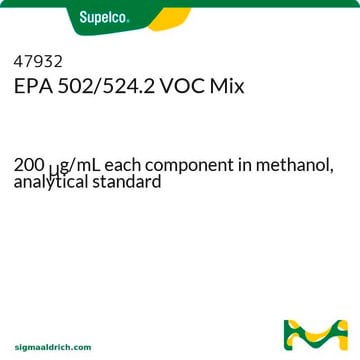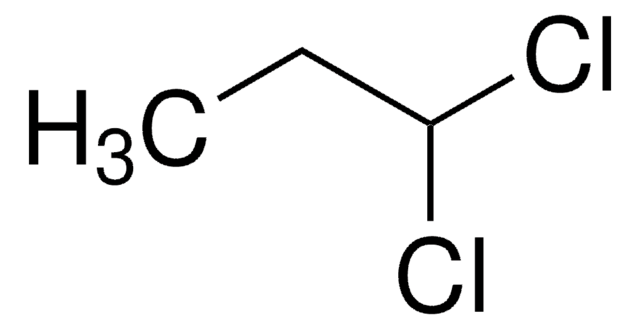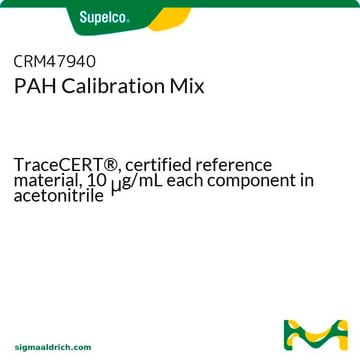47793
trans-1,3-Dichloropropene
analytical standard
About This Item
Productos recomendados
grade
analytical standard
CofA
current certificate can be downloaded
packaging
ampule of 100 mg
technique(s)
HPLC: suitable
gas chromatography (GC): suitable
application(s)
environmental
format
neat
storage temp.
-10 to -25°C
SMILES string
[H]\C(Cl)=C(\[H])CCl
InChI
1S/C3H4Cl2/c4-2-1-3-5/h1-2H,3H2/b2-1+
InChI key
UOORRWUZONOOLO-OWOJBTEDSA-N
¿Está buscando productos similares? Visita Guía de comparación de productos
Application
signalword
Danger
Hazard Classifications
Acute Tox. 3 Dermal - Acute Tox. 3 Oral - Acute Tox. 4 Inhalation - Aquatic Acute 1 - Aquatic Chronic 1 - Asp. Tox. 1 - Carc. 2 - Eye Irrit. 2 - Flam. Liq. 3 - Skin Irrit. 2 - Skin Sens. 1 - STOT SE 3
target_organs
Respiratory system
Storage Class
3 - Flammable liquids
wgk_germany
WGK 3
flash_point_f
80.6 °F - closed cup
flash_point_c
27 °C - closed cup
ppe
Eyeshields, Faceshields, Gloves, type ABEK (EN14387) respirator filter
Choose from one of the most recent versions:
¿Ya tiene este producto?
Encuentre la documentación para los productos que ha comprado recientemente en la Biblioteca de documentos.
Nuestro equipo de científicos tiene experiencia en todas las áreas de investigación: Ciencias de la vida, Ciencia de los materiales, Síntesis química, Cromatografía, Analítica y muchas otras.
Póngase en contacto con el Servicio técnico











